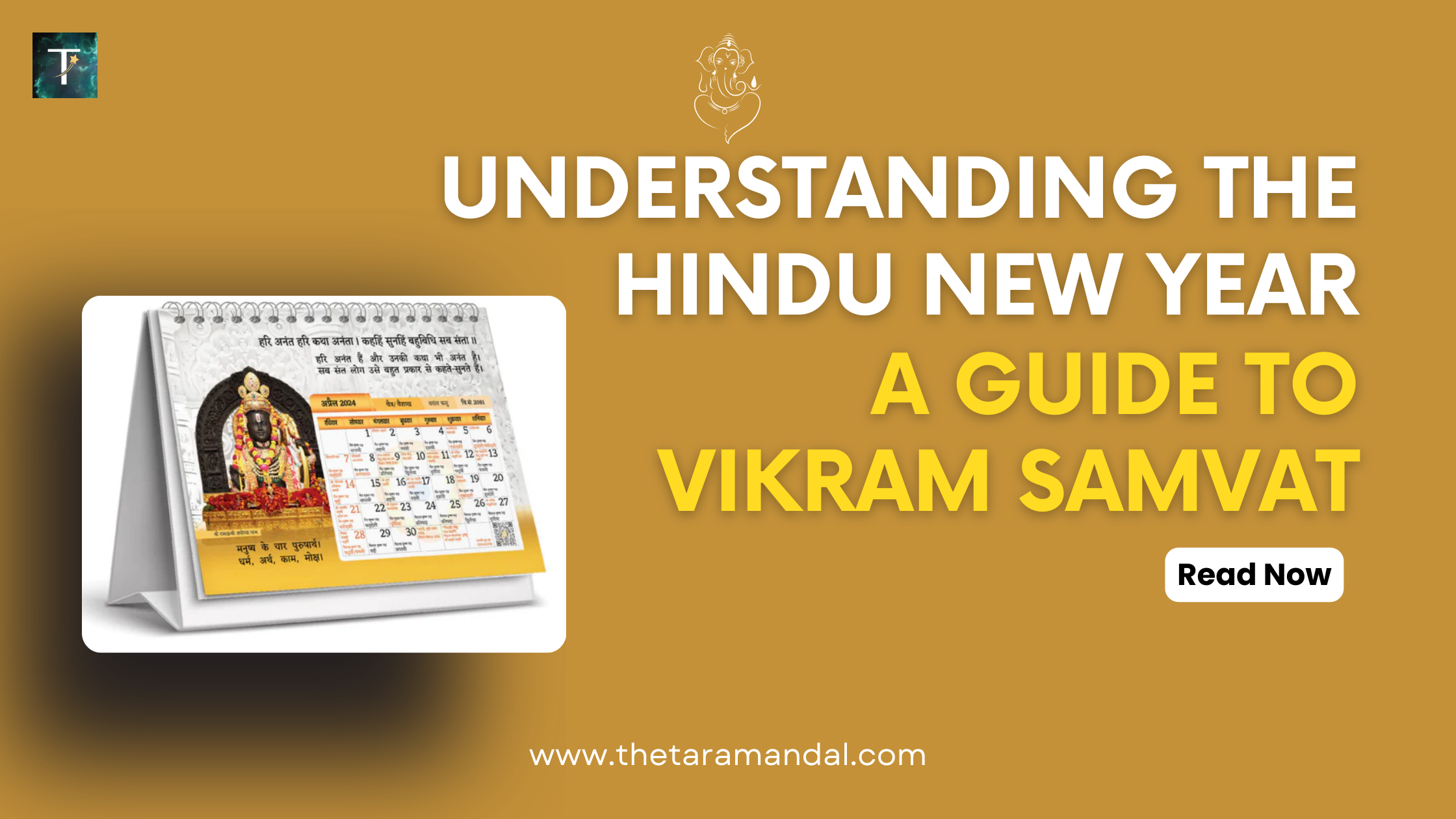on 9 months ago
Understanding the Hindu New Year: A Guide to Vikram Samvat
Understanding the Hindu New Year: A Guide to Vikram Samvat
The Hindu New Year, known as Hindu Nav Varsh, is celebrated with great enthusiasm across India. This festival marks the beginning of the Vikram Samvat calendar, which is an important part of Hindu culture and tradition. In this blog, we will explore the significance of the Hindu New Year, the history of Vikram Samvat, and the customs associated with this auspicious occasion.
What is Vikram Samvat?
Vikram Samvat is a lunisolar calendar that has been used in India since ancient times. It is approximately 57 years ahead of the Gregorian calendar. The year in Vikram Samvat begins with the month of Chaitra, which usually falls between March and April. The first day of Chaitra, known as Chaitra Shukla Pratipada, is celebrated as the Hindu New Year.
Date of Hindu New Year 2025
In 2025, the Hindu New Year will begin on March 30th and continue until March 19th, 2026. This period marks a time of renewal and new beginnings in the Hindu calendar.
Astrological Significance
The Hindu New Year holds great astrological importance for several reasons:
New Beginnings: The start of the Vikram Samvat is considered an auspicious time for new ventures and endeavors. People believe that starting new projects during this time will bring success and prosperity.
Chaitra Navaratri: The Hindu New Year coincides with Chaitra Navaratri, a nine-night festival dedicated to Goddess Durga. This period is seen as a time for spiritual growth and devotion.
Agricultural Significance: The new year marks the end of one harvest cycle and the beginning of another, symbolizing renewal in agriculture and nature.
Customs and Rituals
The celebration of Hindu Nav Varsh involves various customs and rituals:
Puja and Offerings: Devotees perform puja (worship) at home or in temples to seek blessings for the coming year. Offerings typically include fruits, flowers, and sweets.
Decorating Homes: People decorate their homes with colorful rangoli designs and fresh flowers to welcome prosperity and happiness.
Wearing New Clothes: It is customary to wear new clothes on this day as a symbol of fresh beginnings.
Feasting: Families prepare special dishes and sweets to celebrate together. Traditional foods vary by region but often include items made from seasonal ingredients.
Community Celebrations: Many communities organize fairs and cultural events to celebrate the Hindu New Year together, fostering a sense of unity and joy.
Conclusion
The Hindu New Year, or Vikram Samvat New Year, is a time for celebration, reflection, and new beginnings. By understanding its significance and customs, individuals can embrace this auspicious occasion with joy and positivity.
As you prepare for this special time, consider connecting with expert astrologers at Taramandal for personalized insights into how the Hindu New Year can impact your life. Download The Taramandal Astrology App today to gain deeper insights into your astrological journey!

